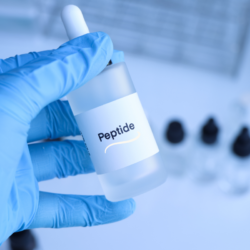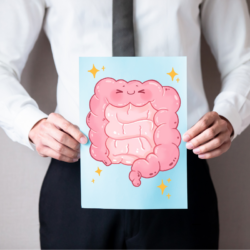Spasmophilia, also known as a tetany attack, is a functional disorder manifested by anxiety attacks and neurovegetative symptoms. When faced with this condition, it is important to find natural treatment methods to improve the quality of life of those affected. In this article, we’ll explore the different options for treating spasmophilia naturally and the food supplements that can help.
What is spasmophilia?
Spasmophilia is a functional disorder characterised by attacks of tetany, anxiety and palpitations. This syndrome is often associated with neuromuscular hypersensitivity. Although not considered an illness in its own right, spasmophilia can be disabling for sufferers. It is often linked to stress and anxiety, although other factors can also contribute to its onset.
Causes and risk factors for spasmophilia
Spasmophilia, often triggered by stress and anxiety, can also be influenced by hormonal imbalances, genetic predisposition and various other factors contributing to its complexity.
Stress and anxiety
Stress and anxiety are considered to be the main triggers of spasmophilia. High levels of stress can cause biochemical imbalances in the body and encourage the onset of spasmophilia symptoms.
Hormonal disorders
Hormonal imbalances can also contribute to spasmophilia. For example, insufficient production of certain hormones, such as serotonin, can lead to increased neuromuscular sensitivity.
Genetic factors – family history
Studies have shown that spasmophilia may have a genetic component. In fact, some people have an inherited predisposition to developing this syndrome.
Symptoms and manifestations of spasmophilia
The symptoms of spasmophilia are varied and can include :
- Tetany seizures: involuntary, sometimes painful muscle contractions
- Heart rhythm disorders: palpitations, tachycardia
- Digestive disorders: bloating, constipation, diarrhoea
- Sleep disorders: insomnia, nightmares
- Anxiety, nervousness, irritability
- Sensation of suffocation
- Trembling
- Tingling and numbness
- Fatigue
Diagnosis of spasmophilia
The diagnosis of spasmophilia is mainly clinical, based on observation of the symptoms and questioning of the patient. Additional tests may be carried out to rule out other possible causes of the symptoms.
Natural treatments for spasmophilia
To treat spasmophilia naturally, it is possible to adopt simple, effective methods aimed at reducing stress and anxiety and improving general well-being. The treatment of spasmophilia is based mainly on :
- Managing stress and anxiety: relaxation, meditation, cognitive-behavioural therapies, etc
- Correcting nutritional imbalances: intake of magnesium, vitamin B6, calcium, etc
- Regular exercise: yoga, swimming, walking, etc
Deep breathing
Deep breathing is an effective technique for calming anxiety and reducing stress. By taking long breaths in and out, you allow your body to relax and regulate your nervous system. Practising deep breathing regularly can help prevent spasmophilia attacks.
Progressive muscle relaxation
Progressive muscle relaxation is a technique that involves gradually contracting and then releasing different muscle groups in the body. This method relaxes the body and reduces stress, helping to reduce the frequency of spasmophilia attacks.
The practice of meditation
Meditation is an ancient practice that helps to calm the mind and reduce stress. By concentrating on breathing and eliminating negative thoughts, meditation helps to better manage anxiety and prevent spasmophilia attacks.
Regular physical exercise
Physical activity is a natural and effective way of combating stress and anxiety. Regular exercise encourages the production of endorphins, the feel-good hormones that help regulate your nervous system and prevent spasmophilia attacks.
A balanced diet
A healthy, balanced diet can help reduce the symptoms of spasmophilia. It is important to give priority to foods rich in vitamins and minerals, such as fruit and vegetables, dairy products, lean meats and wholegrain cereals, to make up for nutritional deficiencies and support the optimal functioning of the nervous system.
Herbal and aromatherapy treatments for spasmophilia
Certain plants and essential oils can be beneficial in relieving the symptoms of spasmophilia. These include chamomile, valerian, passionflower, St John’s wort and lavender essential oil. However, it is important to consult a health professional before using these natural remedies to make sure they are suitable for your situation.
Remineralising plants to strengthen bones and muscles
Minerals such as calcium, phosphorus and magnesium are essential for maintaining strong bones and healthy muscles. However, sometimes our mineral reserves are depleted, which can lead to health problems. Fortunately, there are remineralising plants that can help us replenish our mineral reserves, such as Horsetail.
Horsetail is a plant that naturally contains silicon, a mineral that promotes the growth of bone and cartilage tissue. It is therefore particularly recommended for people suffering from osteoporosis or joint pain. Horsetail can be taken as an herbal tea or as a dietary supplement.
Antispasmodic plants to soothe pain
Spasms are involuntary muscle contractions that can cause pain and discomfort. Fortunately, there are antispasmodic plants that can help relieve this pain.
Valerian is an antispasmodic plant that is particularly effective in treating anxiety and insomnia. It can also be used to relieve menstrual pain or muscle spasms.
@soin.et.nature ? Vous souffrez de spasmophilie ? Découvrez des remèdes naturels pour soulager vos symptômes ! La prêle ? est connue pour ses propriétés reminéralisantes, la valériane ? peut vous aider à traiter l’anxiété et l’insomnie, et le magnésium ? peut aider à réguler votre système nerveux. Prenez soin de vous naturellement avec ww.soin-et-nature.com !santenaturelle, spasmophilie, remedesnaturels, #medecinedouce #skintok #fyp #pourtoi #soinetnature #santénaturelle #remedenaturel #phytothérapie #gemmotherapie #homeopathie #homeopathy #plants #healing #meditation #guthealth #sibo #sifo #argireline phytotherapie. ?
Other medicinal plants
- In the case of cardiovascular problems, it is advisable to use sweet clover or lime blossom. Melilot promotes blood circulation, while Linden has calming properties that can help reduce blood pressure.
- For hepatobiliary disorders, chelidonia is an antispasmodic plant that can help relieve liver and gallbladder pain.
- For intestinal somatisation, angelica, chamomile, basil and tarragon are antispasmodic plants that can help reduce intestinal spasms.
- Finally, for genital somatisation problems, viburnum, baneberry or chasteberry are antispasmodic plants that can help relieve menstrual pain or genital spasms.
Marjoram essential oil: a safe choice for sensitive skin
Marjoram is an extremely effective essential oil for relieving the symptoms of spasmophilia. However, it should be used with caution by people with sensitive skin. To avoid skin reactions, dilute it 50% in a vegetable oil before use. Then massage 3 drops of the mixture into the solar plexus 3 times a day, or place 2 drops on a sugar cube and take 3 times a day for 3 weeks.
Roman chamomile essential oil: the sedative solution to insomnia
When spasmophilia leads to bouts of anxiety and insomnia, Roman Chamomile essential oil can provide a soothing, sedative solution. To use this essential oil, massage 3 drops into the solar plexus and the inside of the wrists when you feel anxious and/or 30 minutes before bedtime. This method can help you relax and sleep better.
Basil essential oil: instant relief from the symptoms of spasmophilia
Basil is another effective essential oil for relieving the symptoms of spasmophilia. You can use it in different ways: 2 to 3 drops on sugar or a neutral tablet, or diluted in vegetable oil. However, for instant results, it’s best to use basil as an inhalant. Place 1 to 2 drops of basil essential oil on a handkerchief and breathe deeply. This method can help calm the nerves and reduce anxiety.
Fig buds to soothe anxiety and depression
Fig bud (Ficus carica Buds MG 1D) is renowned for its anxiolytic and soothing properties. It is particularly effective in calming depression and anxiety, but also acts on gastritis. To reap its benefits, we recommend taking drops of glycerol macerate in the middle of a meal, as a 3-week course of treatment with a one-week break, preferably for at least 3 months. Fig buds can also be taken as a maintenance treatment, one week a month.
Linden bud to promote sleep and calm the nervous system
Linden bud (Tilia tomentosa Mg Bg 1D or Tilia argentea Mg Bg 1D, also known as Dutch linden) acts on the central nervous system. It is a physiological sleep inducer and can therefore be given to both children and adults to promote restful sleep. The recommended dosage for children is 1 mg/kg/day, while adults can take between 50 and 100 drops a day. As with Fig bud, it is advisable to take the glycerol macerate as a 3-week course of treatment with a one-week break, preferably for at least 3 months. Linden bud can also be taken as a maintenance treatment, one week a month.
Food supplements to combat spasmophilia
In some cases, it may be useful to take food supplements to make up for the nutritional deficiencies associated with spasmophilia.
Magnesium
Magnesium is an essential mineral involved in a number of bodily functions, including regulation of the nervous system. Magnesium deficiency can contribute to the onset of spasmophilia. Taking a magnesium-based dietary supplement can help reduce symptoms.
Vitamin B6
Vitamin B6 plays an important role in the production of neurotransmitters, which are essential for the proper functioning of the nervous system. A vitamin B6 deficiency can contribute to spasmophilia attacks. A dietary supplement containing vitamin B6 can help make up for this deficiency.
Calcium
Calcium is an essential mineral for the proper functioning of the muscles and nervous system. A calcium deficiency can cause muscle spasms and encourage spasmophilia attacks. Taking a calcium-based food supplement can help restore adequate calcium levels in the body and reduce the symptoms of spasmophilia.
The importance of consulting a healthcare professional
Although natural treatments and food supplements can be beneficial in relieving the symptoms of spasmophilia, it is important to consult a healthcare professional before starting any treatment. A doctor will be able to help you identify the underlying causes of spasmophilia and suggest a treatment suited to your situation.
Spasmophilia is a complex disorder that can greatly affect the quality of life of those affected. Fortunately, there are several natural approaches to treating spasmophilia, including relaxation, meditation, physical exercise, a balanced diet and taking food supplements. Nevertheless, it is essential to consult a healthcare professional for an accurate diagnosis and a treatment tailored to your needs.
Conclusion: Living with spasmophilia
Spasmophilia can be a disabling condition, but it is possible to live with it by adopting appropriate strategies to prevent and manage attacks. By learning to manage stress, eating a balanced diet and getting regular exercise, you can improve your quality of life and reduce the impact of spasmophilia on your daily life.
Finally, don’t hesitate to consult a healthcare professional for a precise diagnosis and personalised support. Together, you can draw up a treatment and prevention plan tailored to your needs, to help you live better with spasmophilia and regain balance in your life.
Questions about spasmophilia – FAQs
- What are the main symptoms of spasmophilia?
The main symptoms of spasmophilia include tetany attacks, a feeling of suffocation, heart palpitations, tremors, tingling and numbness, fatigue and sleep disturbances.
- Can stress and anxiety cause spasmophilia?
Stress and anxiety are common triggers for spasmophilia. Learning to manage stress and anxiety can help reduce the frequency and intensity of spasmophilia attacks.
- What food supplements can help treat spasmophilia?
Food supplements containing magnesium, vitamin B6 and calcium can help to make up for the nutritional deficiencies associated with spasmophilia and reduce symptoms.







